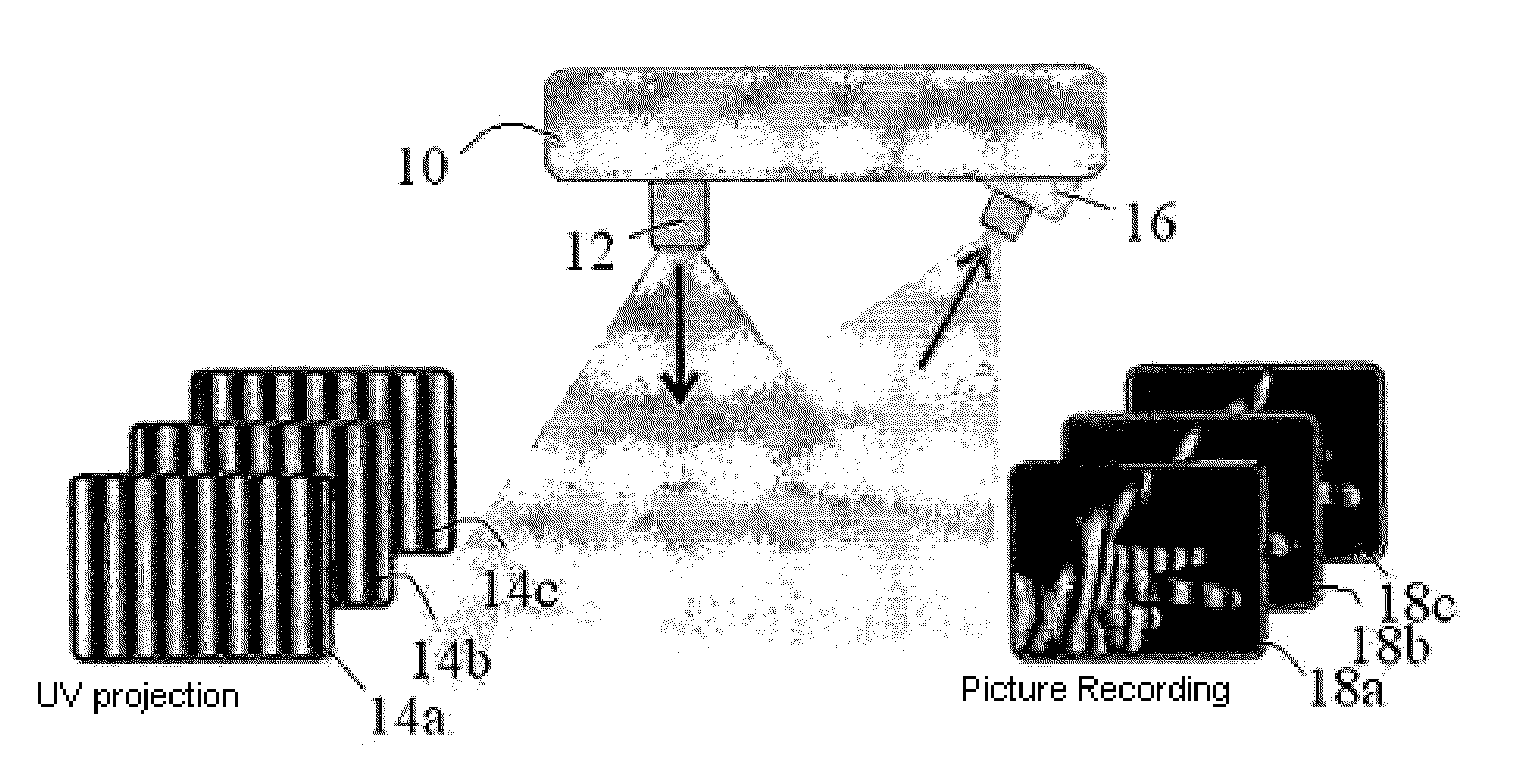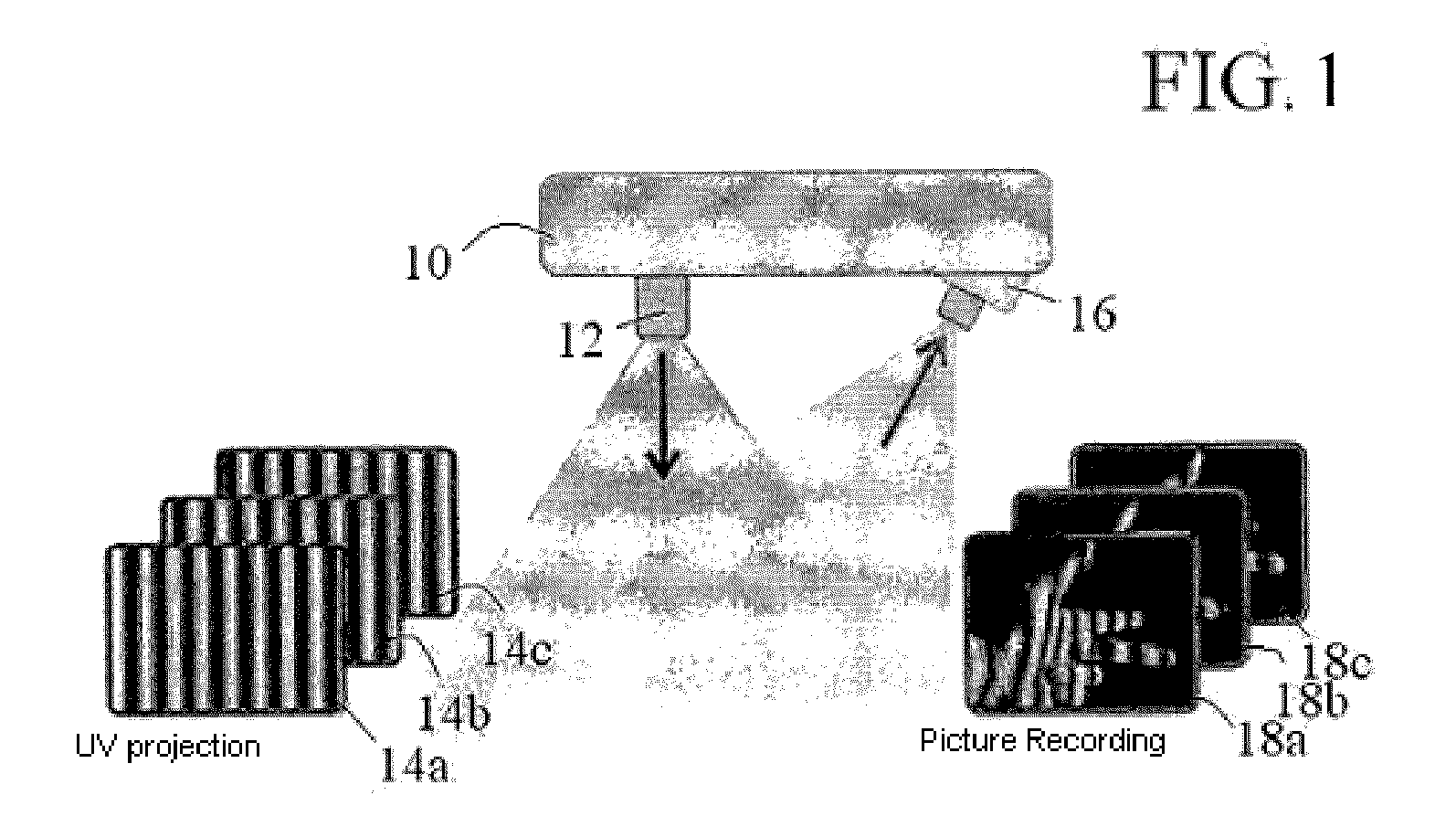Method and arrangement for detecting a surface of an object
a surface detection and object technology, applied in the direction of fluorescence/phosphorescence, measurement devices, instruments, etc., can solve the problems of only analyzing the surface of the object from which the reflection propagates with difficulty, affecting the detection accuracy of the structure deriving back to the radiation pattern in the picture, and disturbing reflections, etc., to achieve suppressing the intensity noise (speckle noise) and reducing the difficulty of detection
- Summary
- Abstract
- Description
- Claims
- Application Information
AI Technical Summary
Benefits of technology
Problems solved by technology
Method used
Image
Examples
Embodiment Construction
[0024]In what follows, a preferred embodiment form of the invention is described while referring to the drawing, with the FIGURE illustrating a disclosure-specific arrangement for detection of the surface of an object and the emitted and received pattern.
[0025]An arrangement given the overall designation of 10 for optical detection of the surface of an object has a radiation pattern projection device 12 which emits ultraviolet radiation which impresses a pattern. Shown as an example is a striped pattern 14a, with the intensity of the radiation being modulated perpendicular to the course of the strip in sine-wave fashion, and remaining spatially constant along the strip length. The radiation pattern undergoes a temporal variation, i.e., the strips migrate. Striped patterns 14b and 14c that temporally follow striped pattern 14a are also shown in the FIGURE.
[0026]Since ultraviolet radiation is used here to generate striped patterns 14a, 14b and 14c, fundamentally recourse can be had wh...
PUM
| Property | Measurement | Unit |
|---|---|---|
| wavelength range | aaaaa | aaaaa |
| wavelength range | aaaaa | aaaaa |
| reflectivity | aaaaa | aaaaa |
Abstract
Description
Claims
Application Information
 Login to View More
Login to View More - R&D
- Intellectual Property
- Life Sciences
- Materials
- Tech Scout
- Unparalleled Data Quality
- Higher Quality Content
- 60% Fewer Hallucinations
Browse by: Latest US Patents, China's latest patents, Technical Efficacy Thesaurus, Application Domain, Technology Topic, Popular Technical Reports.
© 2025 PatSnap. All rights reserved.Legal|Privacy policy|Modern Slavery Act Transparency Statement|Sitemap|About US| Contact US: help@patsnap.com


